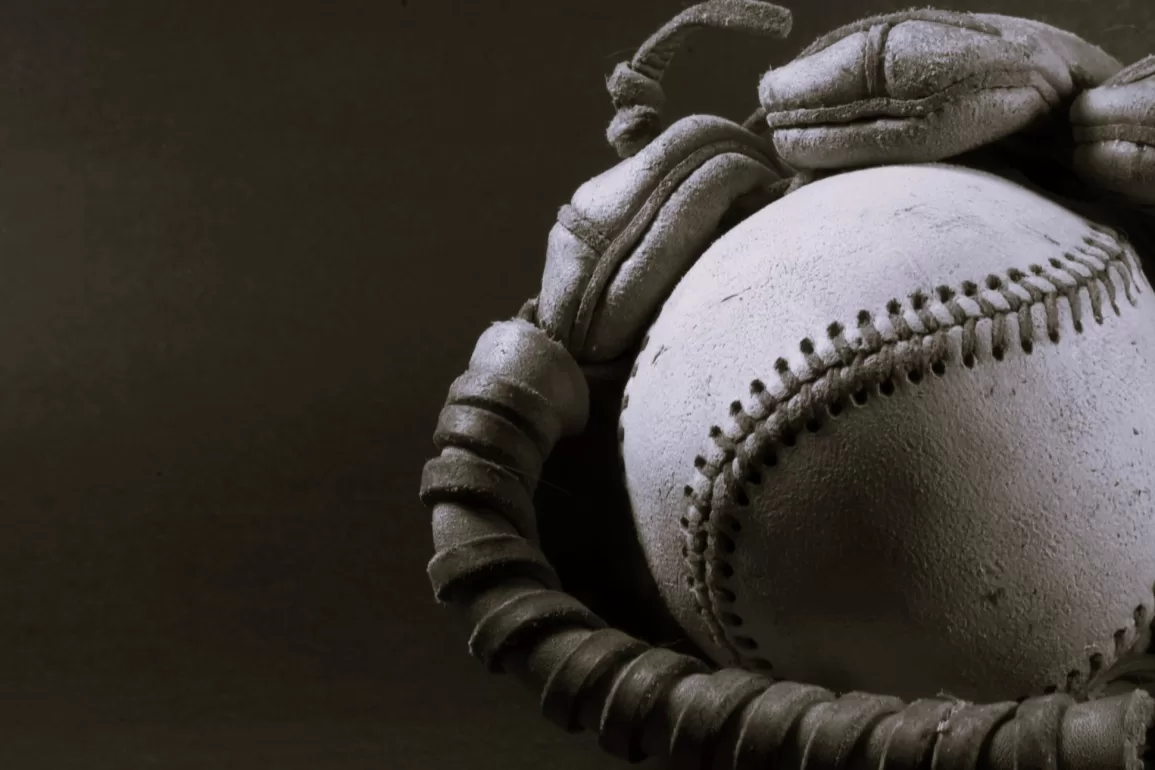“Milking Cows and Throwing Curves” was shortlisted for the 2024 Best in Rural Writing Contest by judge Dr. Chea Parton. Learn more about the contest here.
*
“Randy, you’ll never throw a good curveball unless you’ve milked a cow,” my dad said.
I was fourteen, and we had just finished a pitching practice session in our backyard. I was taken aback. I desperately wanted to add a sharp-breaking curve to my pitching repertoire, but I knew there was little chance that I’d ever get to milk a cow by hand.
Then I saw Dad grin, and I knew he was joking—sort of.
I think it was his way of telling me I needed to develop hand strength to be a good pitcher, the kind of hand strength he had acquired by milking several cows, by hand, every day on his family’s farm in northern Indiana from the age of eight to eighteen.
Every single day. No exceptions. Cows didn’t take days off from producing milk, and it was Dad’s job to collect the milk, rain or shine, whether he was sick or not, whether he wanted to or not.
When it came to baseball, I took Dad’s words as gospel. And with good reason. He had starred on local men’s teams as a teenager and was signed out of high school by the Boston Red Sox for a $5,000 bonus—big money back in 1944. After a stint in the Army during World War II, he played professional baseball for seven years and even had a brief stay in the majors in 1951 when he pitched six innings against the World Champion Yankees, giving up just three runs in six innings facing a lineup with five future Hall of Famers. (“You could look it up,” as Casey Stengel used to say.) So I took his advice to heart. In lieu of milking cows, I bought a pair of spring-loaded hand grips, and every night I squeezed them until my forearms and hands ached. I did get stronger, and I did develop a sharp-breaking curve, but I never quite attained Dad’s prodigious hand strength, which persisted into his old age.
When Dad married my mom, they bought a house in Maples, a tiny town (population 130) about a mile from the family farm. I’d see the farm regularly as a kid when I rode my bike past it on the way to baseball practice in a neighboring town or when we drove by it on the way to visit one of Dad’s brothers. The family name was still on the barn, even though Grandma had sold the place many years earlier and moved to Maples after Grandpa had died. Whenever I saw the farm, I imagined Dad out there doing the chores he had told me about, not only the milking but hauling feed and water to animals and weeding the garden and baling hay and harvesting crops.
It was that last task that staggered me the most. Harvesting back then—Dad was born in 1926, so he grew up in the 30s and early 40s—required arduous manual labor. Though the mechanical corn harvester was invented in 1930, Grandpa couldn’t afford one until many years later, so Dad and his three older brothers picked the ears of corn by hand, filled bushel baskets with them, hauled the baskets to Grandpa’s truck, and emptied them into the back. Then it was back to the rows of corn, filling more baskets, and on and on, acre after acre, in what had to be one of the most monotonous and exhausting chores ever invented.
My upbringing was rural too. Maples, more of a village than a town, was surrounded by farmland. Across the railroad tracks that ran through our back yard was a fertilizer plant, where my mom worked as a secretary. But my rural life, compared to Dad’s, was privileged and easy. I mowed our nearly one-acre yard with a push mower and trimmed around our chain-link fence, trees, and house with hand clippers. I cleaned out our garage occasionally and swept our sidewalks. That was about it for chores. I did hire myself out several times as a teenager to a local farmer to weed bean fields or bale hay, but it was maybe a dozen times all told, just enough to give me a small taste of the kind of physical labor Dad and his brothers did all the time until they left the farm to live on their own.
How things had changed in a single generation! Even if Dad had chosen to continue the family farming tradition and I had grown up on a farm, like many of my schoolmates, my chores wouldn’t have rivaled his in difficulty. Sure, my life would have been harder than it was in Maples, but much of the work had been mechanized by then—the cows milked by machines, the crops harvested by combines.
I certainly wouldn’t have ever had to do what Dad and his brothers did one summer when Grandpa decided he wanted a basement. Grandpa used car jacks to raise one side of the house a few feet, and his sons crouched down and started shoveling under the house, unable to stand up until they had dug out an enormous amount of dirt. Talk about backbreaking work! You’d probably get arrested today if you forced your children to perform such a task.
Dad and his brothers didn’t complain. “Grandpa was quite a disciplinarian,” Dad told me years later. “Don’t get me wrong,” he added. “He loved us, but let’s just say we knew better than to misbehave or fail to do our chores. Besides, we took pride in doing the work. It was necessary, and we knew it. That’s just how it was.”
Though there was always work to do on the farm, Grandpa played baseball on local teams on Sunday afternoons, and by all accounts he was an excellent hitter and first baseman. He passed his love of that most rural and pastoral of sports down to his sons.
So in between chores, Dad played baseball with his brothers, who were outstanding players too. (One of them, Gerald, was also signed by the Red Sox. He’s a family legend for killing a rabbit with a baseball when he was too young to hunt with Grandpa’s rifle.) When a brother wasn’t available, Dad pitched at a strike zone he had painted on the side of the barn, imagining himself pitching in a major league game, blowing his fastball past Joe Dimaggio, Ted Williams, and Jimmie Foxx, stars whose exploits he heard broadcast on the family radio.
Years later, Dad constructed a backstop in our yard for me, on one part nailing several two-by-fours. I painted a strike zone on them and, like Dad, threw countless pitches at the zone in made-up games against a new generation of stars, my curve ball baffling Rod Carew, Willie Mays, and Al Kaline.
Dad and I had those fantasy games in common, at least.
We both also played high school basketball, though our experiences in that Hoosier madness were quite different. Dad’s team at Hoagland High School was made up almost exclusively of farm boys who were needed for daily chores, so the team only practiced twice a week. By the time I played, in the 1970s, all teams practiced or played games every day except Sunday.
Though athletic training for me and my high school teammates was much less sophisticated than it is now, we did have a weight machine and some free weights, and we worked out to try to gain some of the strength that Dad and his brothers had acquired naturally just by performing their daily chores. “My life was a workout,” Dad used to say.
Personal trainers call that “functional training” today, and they design exercise regimens that incorporate the “farmer’s carry”—walking several yards while holding heavy dumbbells in each hand. (You know, like carrying buckets of feed to the animals.) Some trainers recommend hoisting canvas bags filled with sand. (Think stacking bags of fertilizer or loading the truck with bags of feed.) I’m sure Dad would get a kick out of modern athletes trying to recreate his “exercise routine.” Dad, like most of the rural men of his generation, never went to a fitness center in his life, never had a gym membership, didn’t have a basement cluttered with barbells and dumbbells. Yet except for one brother who died of a heart attack in his fifties, the Hisner boys all lived vigorous lives into their eighties.
I was a three-sport athlete in high school and continued competing in sports well into my fifties. I’m still, at age 66, an avid exerciser, and, yes, my basement is cluttered with exercise equipment. Somewhere, Dad is smiling about that, I like to think, proud of me for trying to match his physical strength in my own modern way.
Though the farm chores in my family ended with Dad’s generation, the baseball connection endures. I coached my four sons’ youth teams, creating countless memories that we still talk about. Mom and Dad were in the bleachers at almost every game, enjoying their grandsons’ exploits. All of them played in high school, two at the college level, and my oldest has been a high school baseball coach for almost twenty years. I’m well past my baseball playing days, but I have stayed connected to baseball by umpiring. I’ve worked at every level from Little League to college ball and men’s leagues. When I’m behind the plate and begin a game by pointing to the pitcher and saying, “Play,” I picture Dad out there as a young man, wearing an old-fashioned wool uniform, the ball in his right hand, his eyes locked on the catcher’s target, about to unleash a blazing fastball powered by farm-raised brute strength.
*
Learn more about Randy on the Contributors’ page.
Submissions for the Best in Rural Writing Contest are already open. Find more details here.
(Photo: Brock G/flickr.com/ CC BY 2.0)

Sunday, April 13th, 2025 1pm EST/ 6pm GMT
The first online writing seminar of the year, “The Ol’ He Said, She Said: Writing Stronger Dialogue” will look at how to create more natural-sounding dialogue, as well as improve the mechanics around speech. The seminar is free for WRITER or SUPPORTER subscribers, or $15 for everyone else. More information can be found here.

- Milking Cows and Throwing Curves by Randy Hisner - April 3, 2025

